Patient Success Stories
Preserving the legacy of wildlife
Our actions impact the environment and its wildlife. Our province is home to 587 wildlife species — one of the most diverse areas in the world. Wildlife health is an important indicator to the health of our environment.
95% of animals admitted to AIWC’s care are injured or orphaned due to human activity. Wildlife is critical to our survival, and with your support, we are working to ensure future generations can enjoy the animals that call our province home.
Patient Success Stories
2024 Patients
great horned owl 23-1592
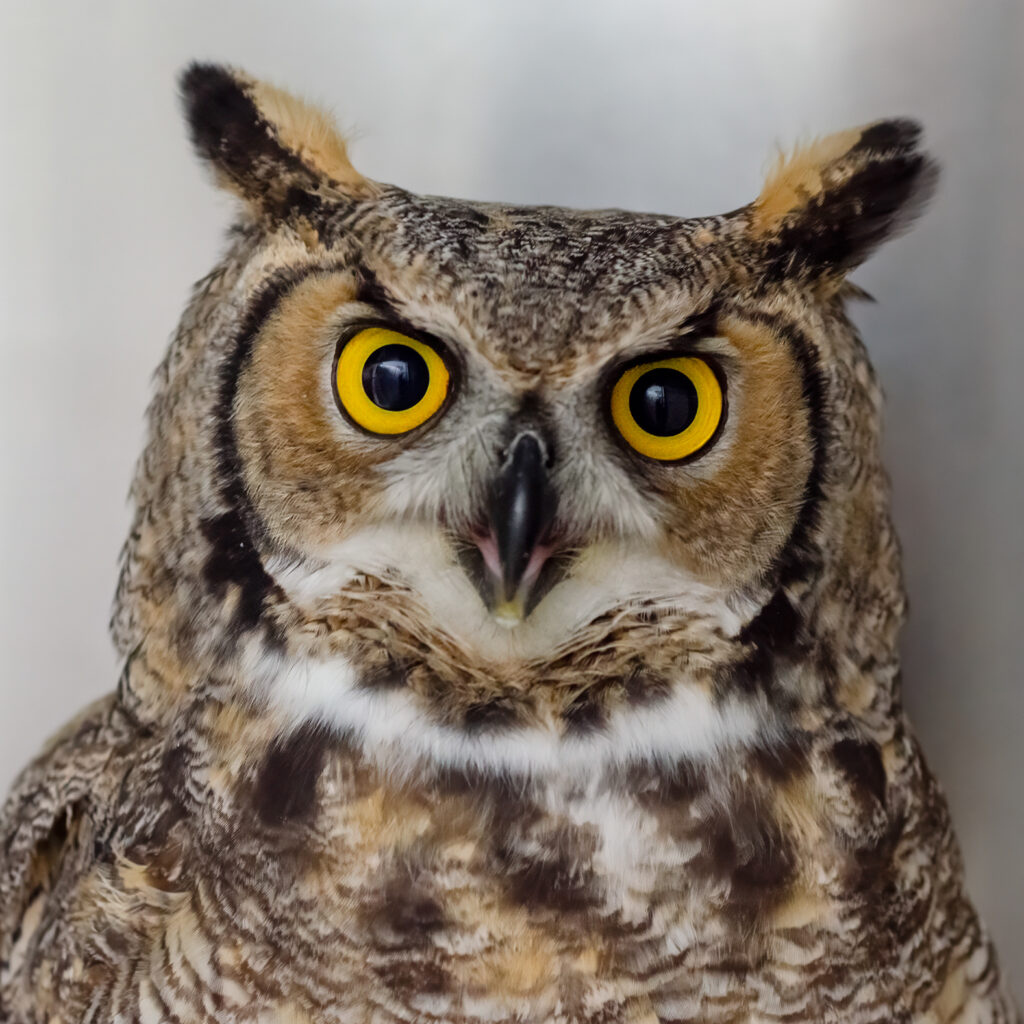
This feisty great horned owl was admitted October 20, 2023 with soft tissue injuries from being tightly tangled in string, and then caught on a barbed wire fence. Early treatment included removing the string, following by cleaning and bandaging the wounds.
Although he showed early signs of progress, with most of the injuries healing, one large wound remained that eventually required suturing.
This owl’s intense personality made it an extra challenge to reapply bandages and clean the incision. As is the case with many wild animal patients, the stress of handling can lead to some feather damage, and this patient’s tail required imping: the replacement of broken feathers with healthy donor feathers.
Even so, the clinic team (and the owl) persevered, and after nearly 80 days in care, the wound had finally healed. Great horned owl 23–1592 was released on January 7, 2024.
Great horned owl 23-1265
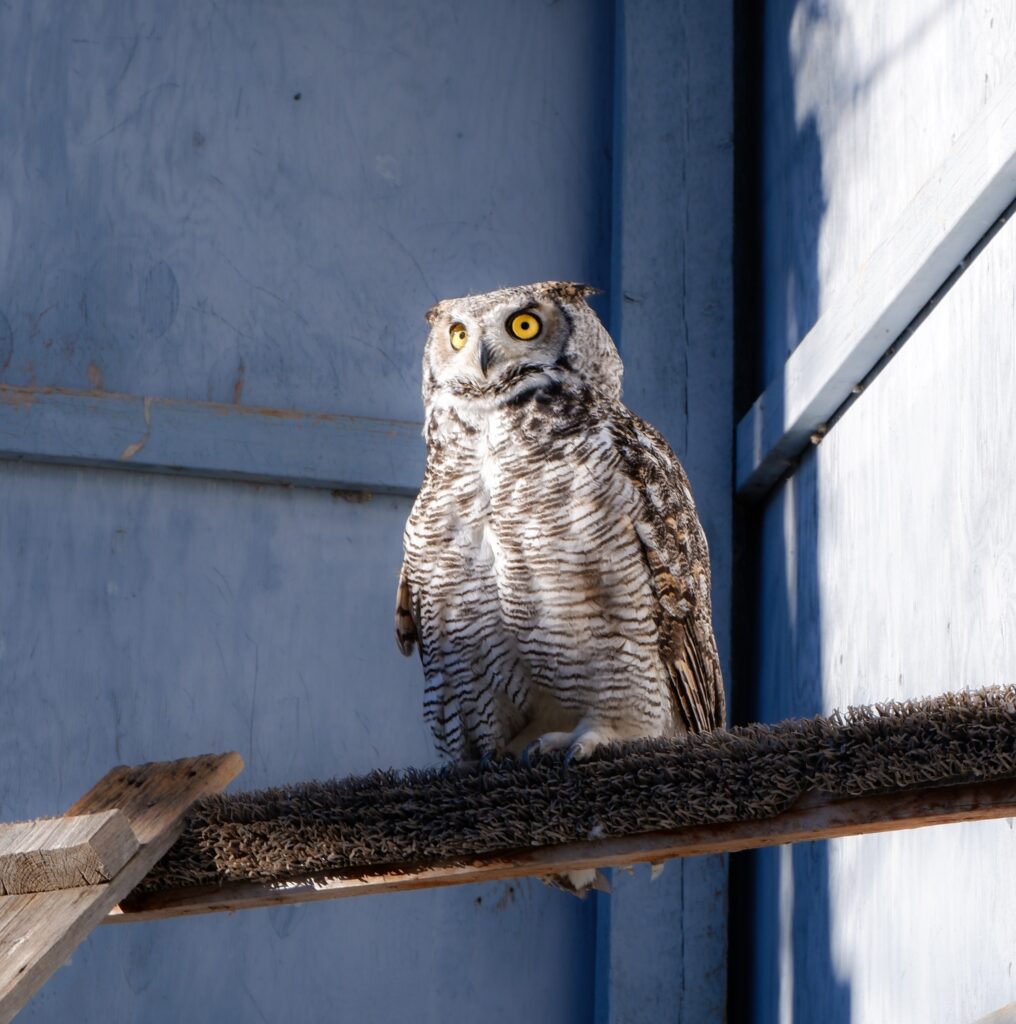
Great horned owl 23-1265 came into care on August 1, 2023 after being found caught on barbed wire on a farm north of Gleichen, AB. Injuries included lacerations to the right wing, which our clinic team swiftly bandaged. Over the next month these wounds were regularly cleaned. A wound on the owl’s patagium (the membrane connecting the shoulder to the wrist) proved challenging to heal, and caused thickening of tissue on the wing. This reduced use of the wing during flight tests, and the clinic team began regularly massaging and stretching the wing while the owl was under anesthesia.
In early October, a stent was applied to stabilize the wing, and by the end of that month the patagium wound had finally closed. By the end of November he was moved to the large outdoor Flight Pen to encourage excercise, where a few broken flight feathers were noticed.
Over the next few months, the clinic team regularly tested his flight, building up his strength. On February 14, great horned owl 23-1265’s broken feathers were replaced with healthy donor feathers (imping) and he was released on February 15, 2024. That’s 198 days in care!
Mallard 24-9
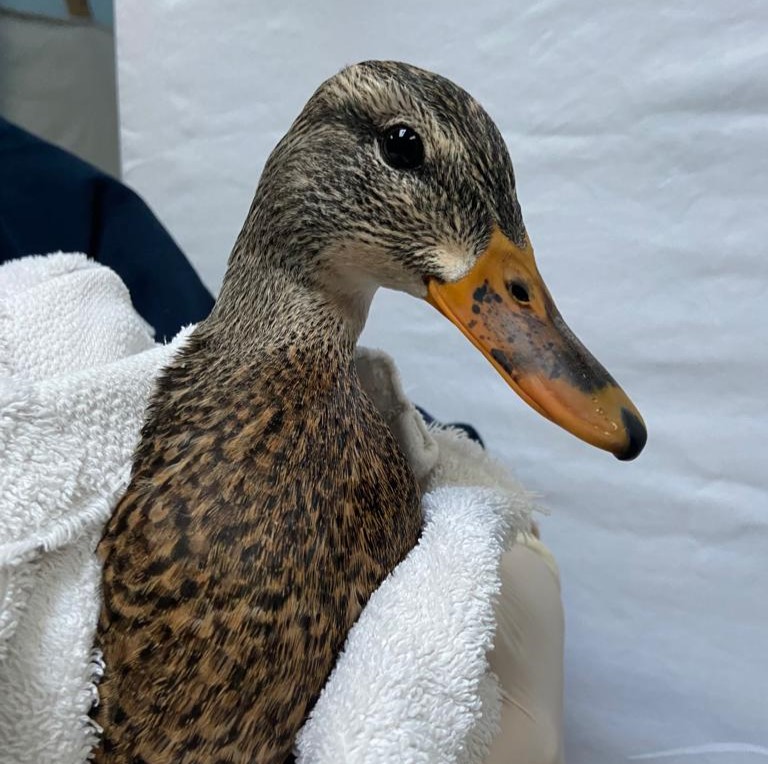
January’s deep freeze wasn’t kind to this shy mallard hen. She was found on January 15, 2024 in an industrial park parking lot unable to fly. While our clinic team noticed some cracks on her feet, it wasn’t until these injuries worsened that the cause of her intake was made clear: frost bite. Of the next few weeks in care, several of mallard 24-9’s toes turned necrotic and after other options were weighed, veterinarian Dr. Cara determined amputation would be needed.
Parts of three digits on her right foot were amputated on February 8, and thankfully most of her webbing was saved, ensuring she could swim another day. A foam “boot” was applied to help her recovery. Once this foot healed, another digit was amputated on her right foot on February 21.
Once all her toes had healed and the clinic team confirmed her ability to swim, she as released on March 9, 2024.
Muskrat 24-27
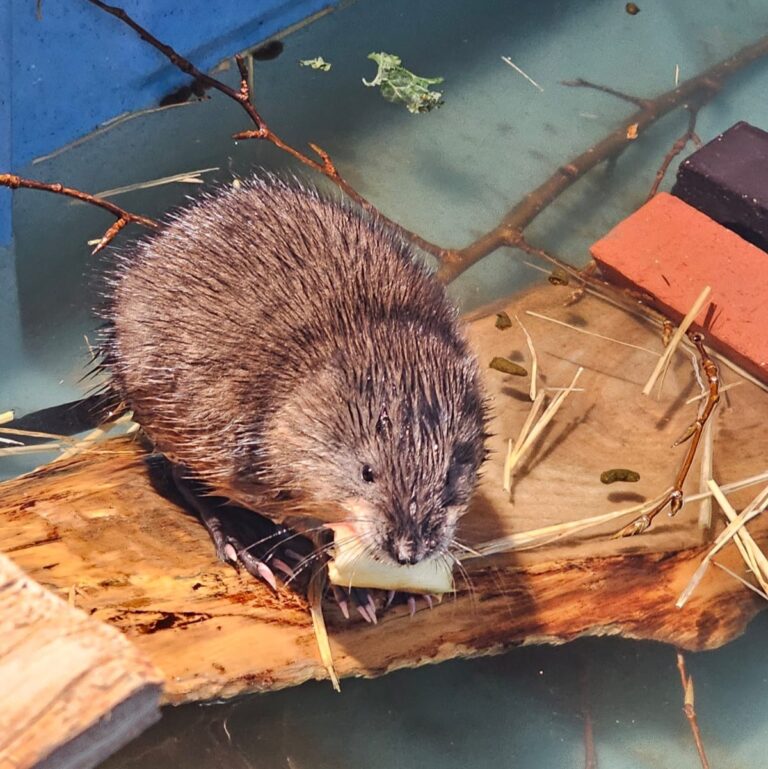
This adorable muskrat came to us on February 16, 2024, after he repeatedly entered someone’s home in Rocky View County. While we can’t know for sure, this strange behaviour is likely the result of him reaching maturity and leaving his mother to find his own territory (and getting a little lost along the way).
He stayed in care until after the spring melt on April 23, 2024, giving this energetic little rodent plenty of proper wetland habitat to call his own!
Northern Saw-whet Owl 24-81
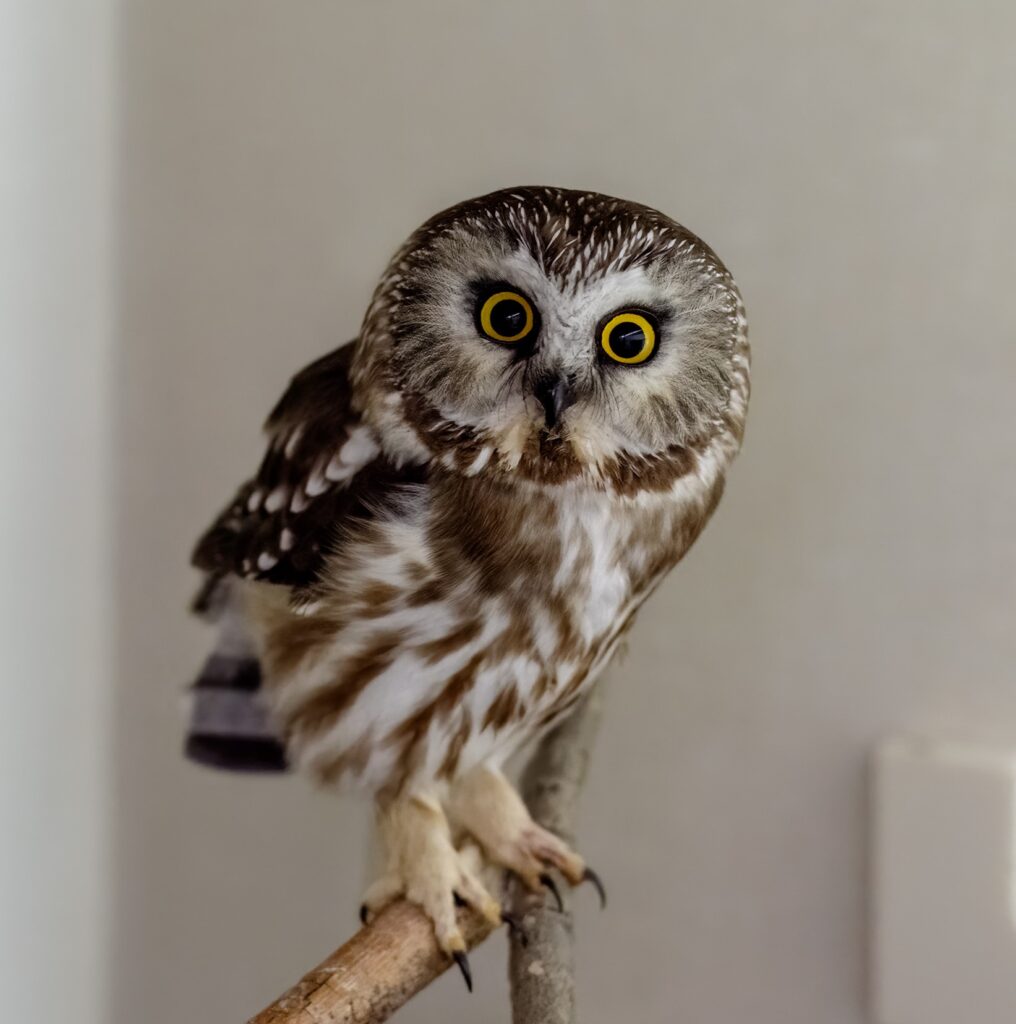
This little northern saw-whet owl arrived on April 20, 2024 after he struck a window in Airdrie. At just 91 grams on intake, he weighed less than a bar of soap!
After recieving supportive care and gaining 8 grams, he quickly improved and was released on May 11, 2024.
Ring-Billed Gull 24-129
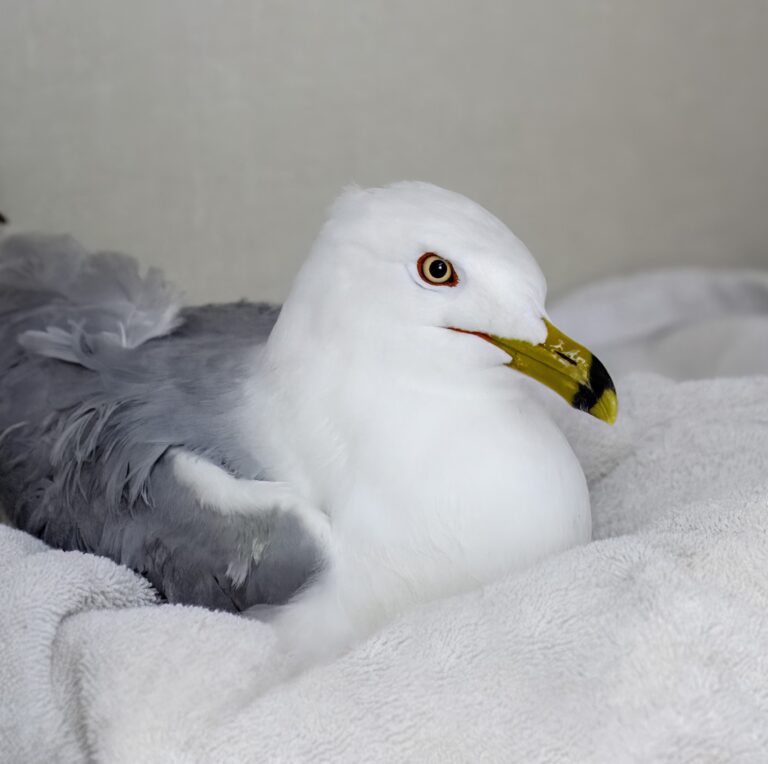
On May 1, 2024, Ring-billed gull 24-129 was found by a concerned citizen unable to stand at a Southeast Calgary shopping centre.
Upon intake, the clinic team found suspected spinal trauma and inflamation preventing this gull from putting weight on its legs. Treatment for this injury included keeping the gull upright with a sling that also prevented feces from caking to their feathers.
Within a week, the gull had improved, and was able to walk on their own again. A return to swimming and flight soon followed, and ring-billed gull 24-129 was released on May 23, 2024.
2023 Patients
American black bear triplets
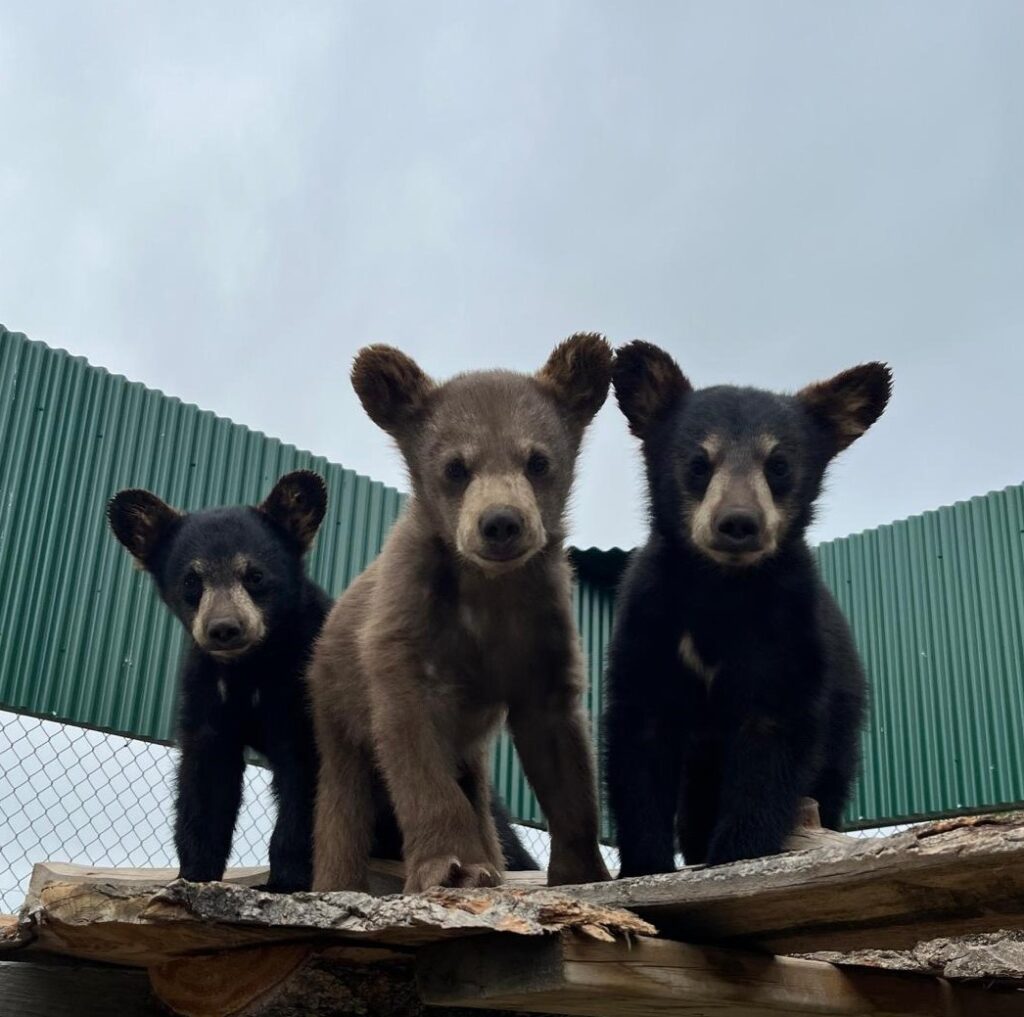
These nine week-old black bear siblings came to AIWC on March 19, 2023 after their den site was disturbed and their mother was scared away. Over the next eight months the trio packed on the pounds, and — just before our first dump of snow — they were ready. After some pre-release exams, the cubs were driven near where they were originally found and returned to the wild on October 18, 2023.
We’re happy to report the cubs have all denned down for their winter sleep, and we wish them well on each of their wild bear journeys.
Swainson's Hawk 23-1476
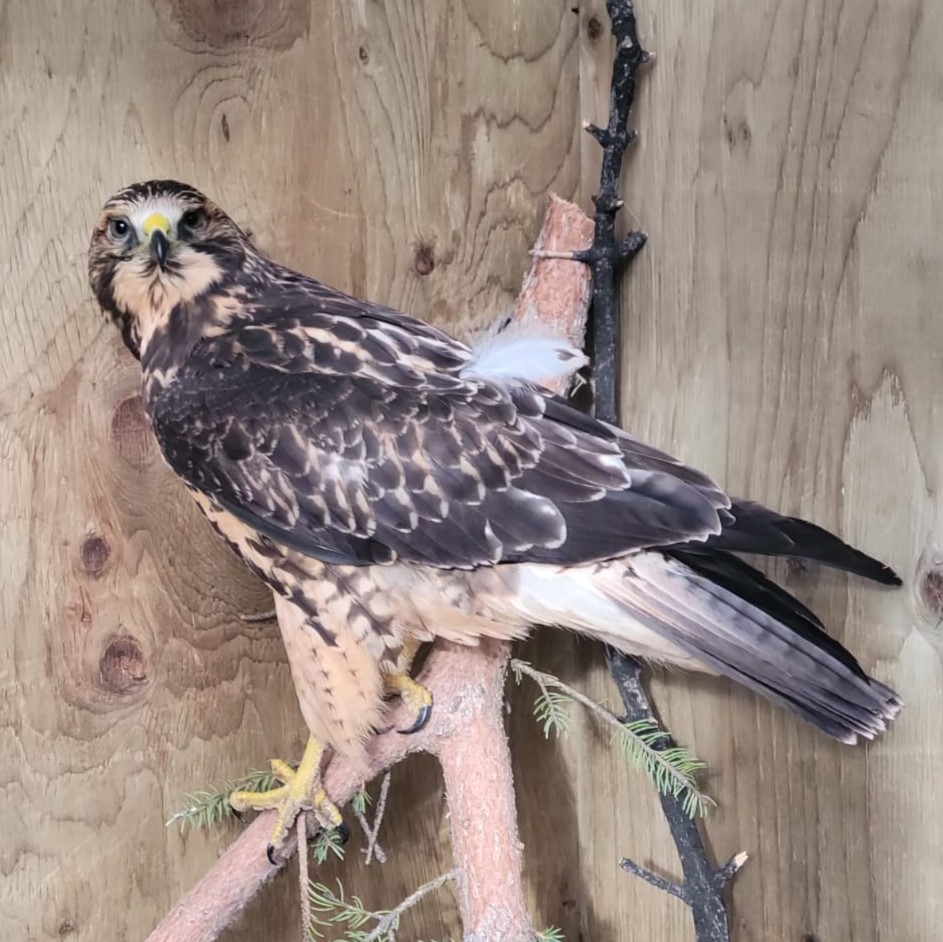
Swainson’s hawk 23-1476 came to us in September with a ruptured and infected crop. This muscular, pouch-like organ stores food before it’s passed to the stomach.
After surgery, bandages, and lots of cleaning, this hawk slowly but surely recovered well enough to be moved to an outdoor pre-release enclosure. There, they began eating on their own and maintained good weight.
As migration for his species was already in full swing, it was important for this patient to be released ASAP. After nearly 50 days in our care, Swainson’s hawk 23-1476 was returned to the wild!
Great Horned Owl 23-1531
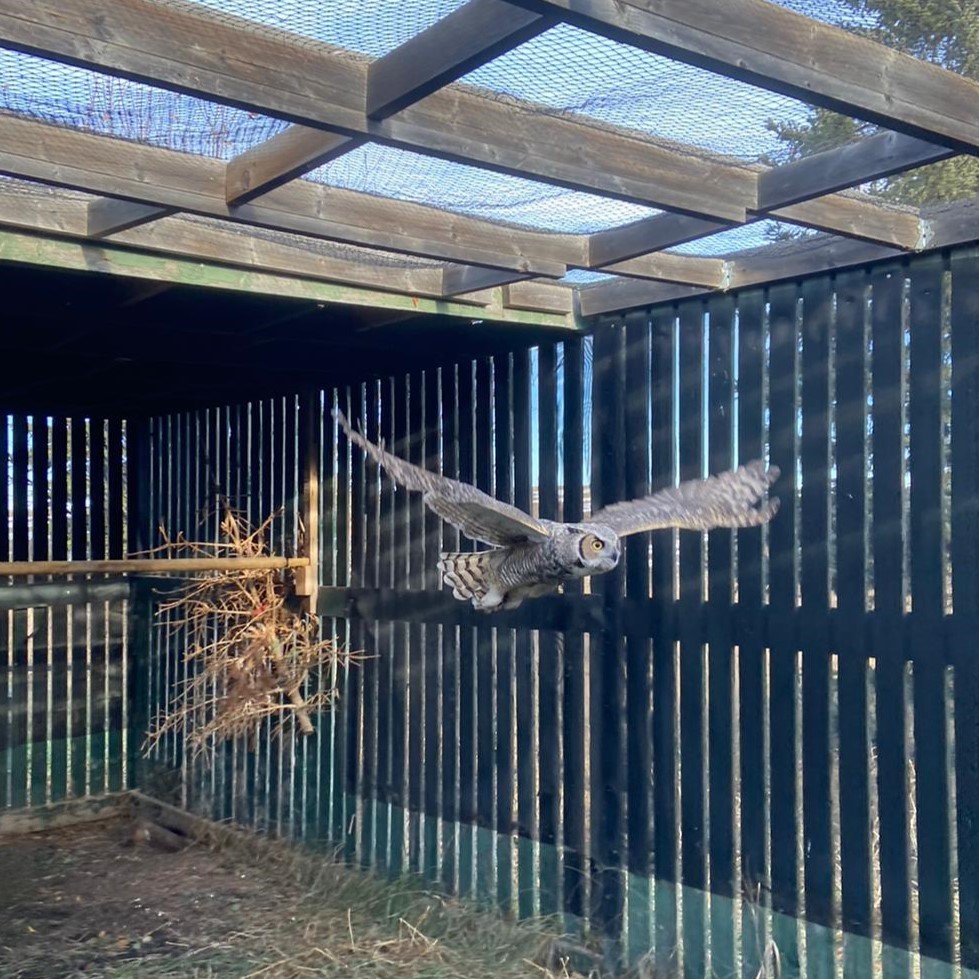
This tenacious great horned owl stunned our team with his recovery, as he came to the clinic, unable to fly or stand on his own due to spinal trauma.
Initial treatment involved fluids medication and rest. Two weeks after intake he began feeding on his own, and a few days later, it came time to stretch his wings again. Flights started out short but vigorous, and the team noticed his left wing drooping, possibly as the result of overexertion.
But, a few days of rest later and he was fully flying and ready to be returned to the wild. Great horned owl 23-1531 was happily released on October 21, 2023.
Pine Grosbeak 23-1603
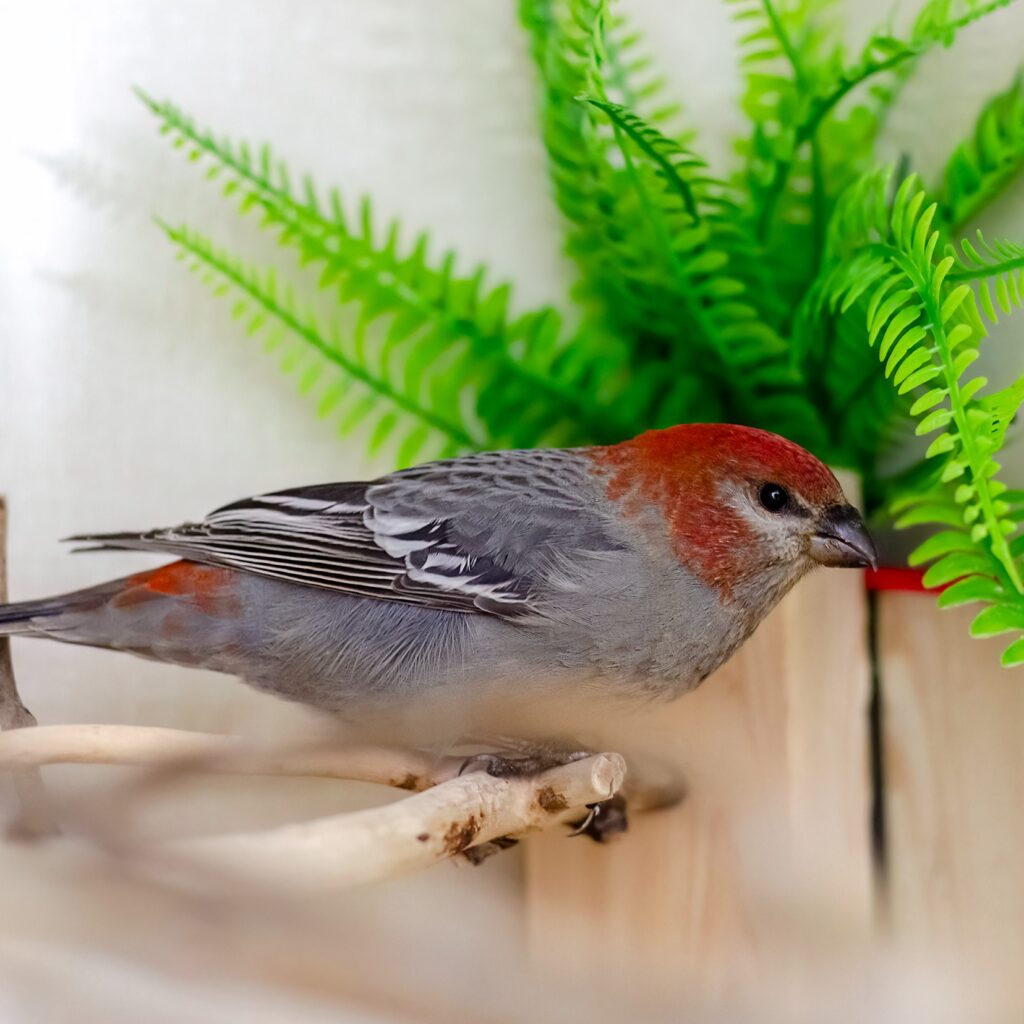
This immature male pine grosbeak arrived after striking a window in the town of Balzac.
Pine grosbeaks rear their young high in the Rockies, but come down to prairie towns during winter to frequent birdfeeders. That means, individuals less than a year old don’t encounter many human-made structures until their first descent down the mountains.
Luckily, this young male bounced back quickly, and was released on October 29, 2023, just three days after intake.
Common loon 23-1611
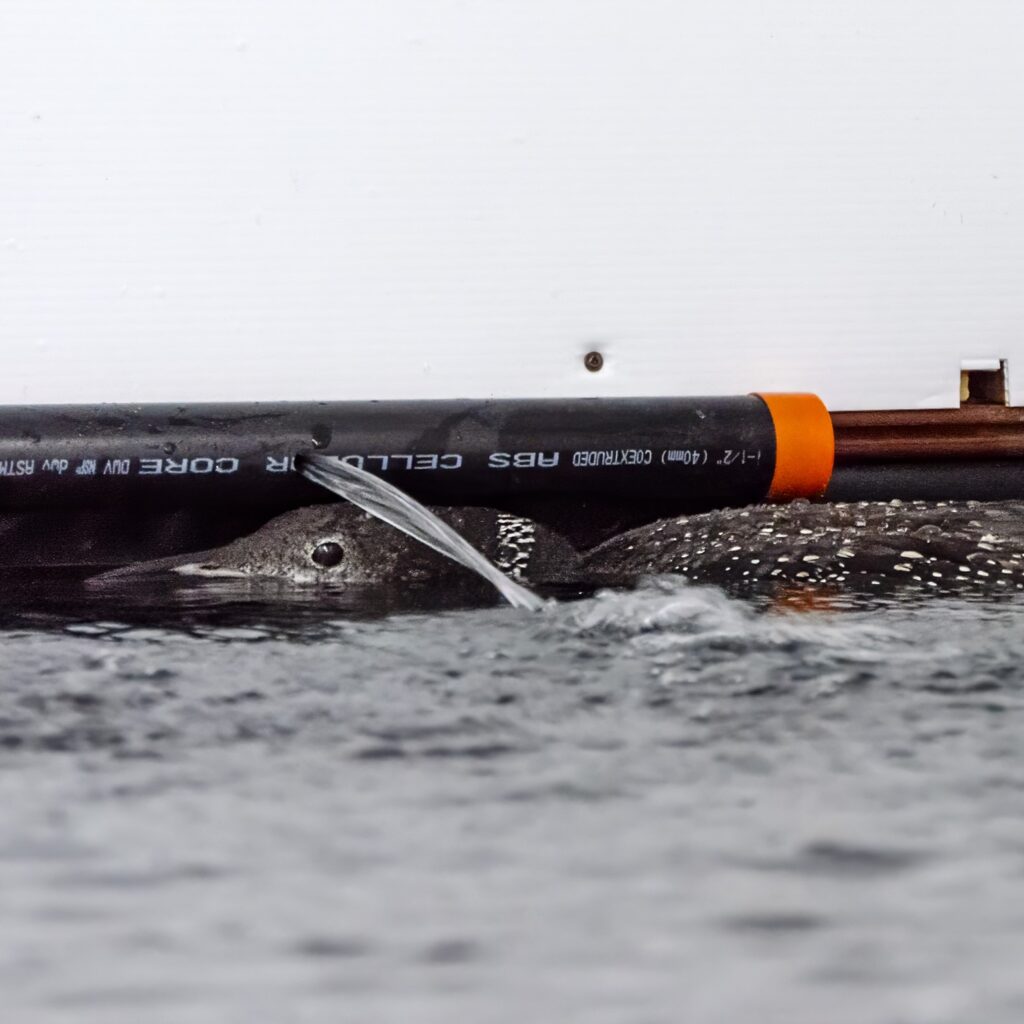
Common loon 23-1611 arrived at AIWC on October 27, 2023 dehydrated and trapped on dry land. Loons can only take off on open water, and are at risk of stranding during a sudden freeze, as suspected with this patient.
After receiving fluids and a few days rest, common loon 23-1611 was released to Glenmore Reservoir three days after intake on October 30, 2023.
Western Grebe 23-1573
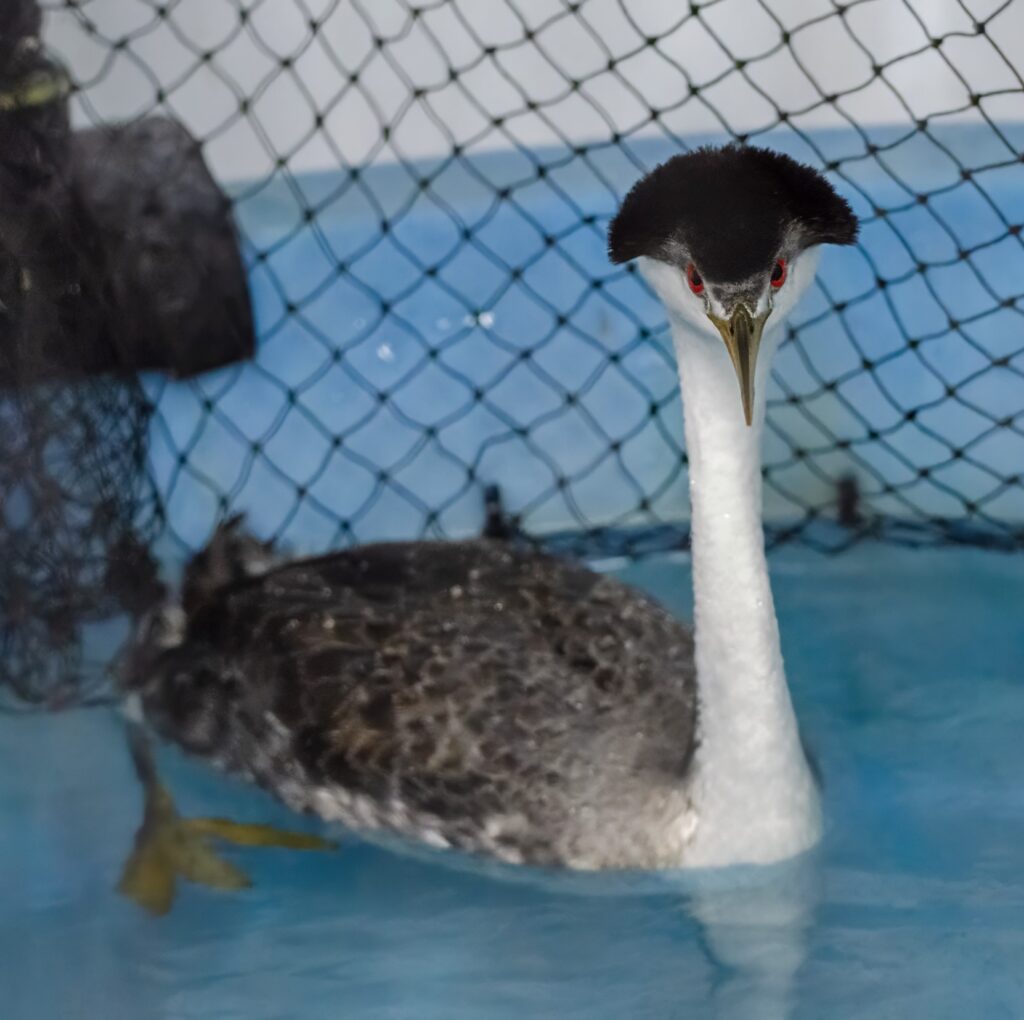
Western grebe 23-1573 was admitted on October 8, 2023 with a fractured left wing, an injury that takes a significant time to heal.
Western grebes are among several diving bird species that often refuse to eat in care, which required our clinic team to force-feed this patient during the healing process. While this isn’t ideal, force-feeding can prevent weight loss during care.
Thankfully, western grebe 23-1573 healed well enough to be released thirty-three days after intake on November 10, 2023.


